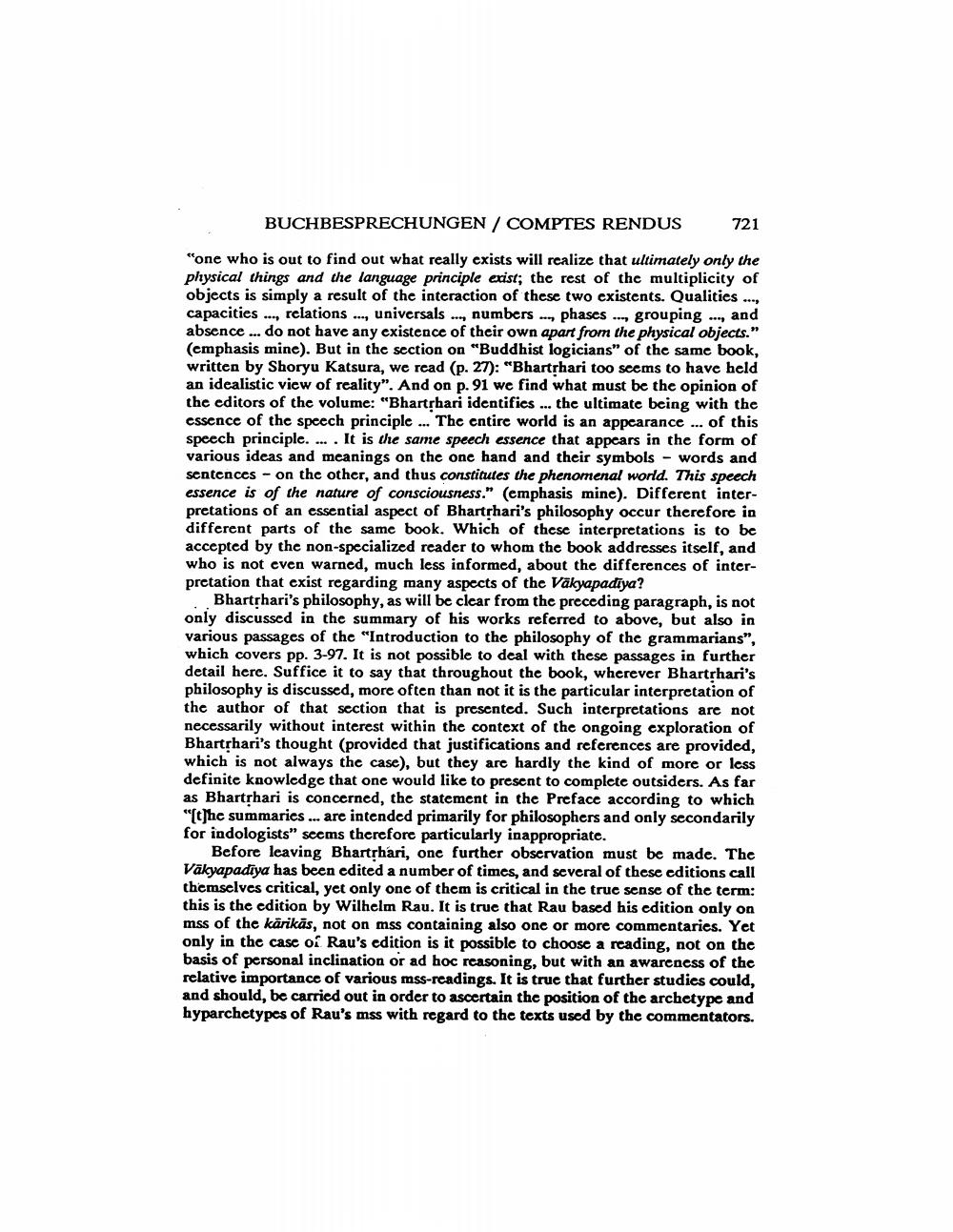Book Title: Book Review Encyclopedia Of Indian Philosophies Author(s): Johannes Bronkhorst Publisher: Johannes Bronkhorst View full book textPage 4
________________ BUCHBESPRECHUNGEN / COMPTES RENDUS 721 "one who is out to find out what really exists will realize that ultimately only the physical things and the language principle exist; the rest of the multiplicity of objects is simply a result of the interaction of these two existents. Qualities ..., capacities ..., relations ..., universals ..., numbers, phases ..., grouping ..., and absence ... do not have any existence of their own apart from the physical objects." (emphasis mine). But in the section on "Buddhist logicians" of the same book, written by Shoryu Katsura, we read (p. 27): "Bhartrhari too seems to have held an idealistic view of reality". And on p. 91 we find what must be the opinion of the editors of the volume: "Bharthari identifics ... the ultimate being with the essence of the speech principle ... The entire world is an appearance ... of this speech principle. ... . It is the same speech essence that appears in the form of various ideas and meanings on the one hand and their symbols - words and sentences - on the other, and thus constitutes the phenomenal world. This speech essence is of the nature of consciousness." (emphasis mine). Different interpretations of an essential aspect of Bharthari's philosophy occur therefore in different parts of the same book. Which of these interpretations is to be accepted by the non-specialized reader to whom the book addresses itself, and who is not even warned, much less informed, about the differences of interpretation that exist regarding many aspects of the Vakyapadiya? Bharthari's philosophy, as will be clear from the preceding paragraph, is not only discussed in the summary of his works referred to above, but also in various passages of the "Introduction to the philosophy of the grammarians", which covers pp. 3-97. It is not possible to deal with these passages in further detail here. Suffice it to say that throughout the book, wherever Bhartrhari's philosophy is discussed, more often than not it is the particular interpretation of the author of that section that is presented. Such interpretations are not necessarily without interest within the context of the ongoing exploration of Bharthari's thought (provided that justifications and references are provided, which is not always the case), but they are hardly the kind of more or less definite knowledge that one would like to present to complete outsiders. As far as Bharthari is concerned, the statement in the Preface according to which "[t]he summarics... are intended primarily for philosophers and only secondarily for indologists" secms therefore particularly inappropriate. Before leaving Bharthari, one further observation must be made. The Väkyapadiya has been edited a number of times, and several of these editions call themselves critical, yet only one of them is critical in the truc sense of the term: this is the edition by Wilhelm Rau. It is true that Rau based his edition only on mss of the kärikās, not on mss containing also one or more commentaries. Yet only in the case of Rau's edition is it possible to choose a reading, not on the basis of personal inclination or ad hoc reasoning, but with an awareness of the relative importance of various mss-readings. It is true that further studies could, and should be carried out in order to ascertain the position of the archetype and hyparchetypes of Rau's mss with regard to the texts used by the commentators.Page Navigation
1 2 3 4 5 6 7 8
